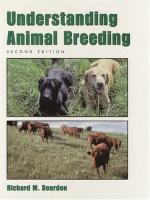|
This section contains 742 words (approx. 3 pages at 300 words per page) |

|
Animal husbandry is the scientific breeding and management of domesticated livestock to achieve qualities desired to meet various nutritional, labor, recreational, and other derivative needs, such as leather, fur, and pharmaceutical sources. Early humans recognized traits in certain animals which they bred to create offspring with those characteristics. Animals which did not meet expectations were culled from breeding stock and sometimes castrated or slaughtered. These primitive animal husbandry methods were based on observation and experience, not genetics. Breeders knew that certain reproductive crosses tended to produce vigorous animals, but they did not understand the scientific principles of animal husbandry until twentieth century geneticists began to comprehend the potential roles of genes for agricultural applications.
Animal husbandry became professionalized in the twentieth century as scientists theorized and determined ways to manipulate livestock's genes regarding such factors as growth and biochemical activity. Jay L. Lush (1896-1982), an Iowa...
|
This section contains 742 words (approx. 3 pages at 300 words per page) |

|


